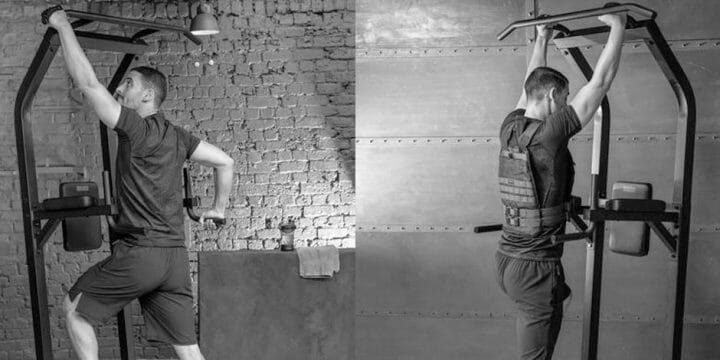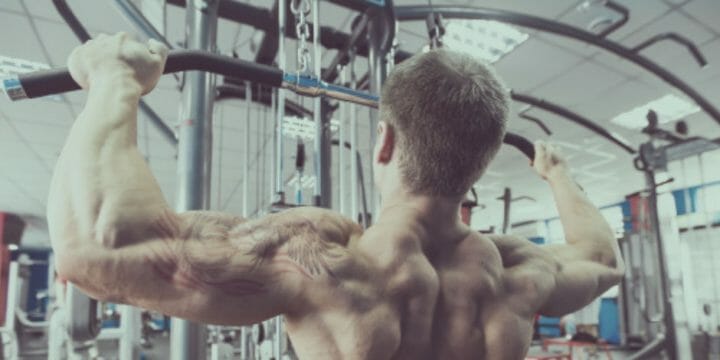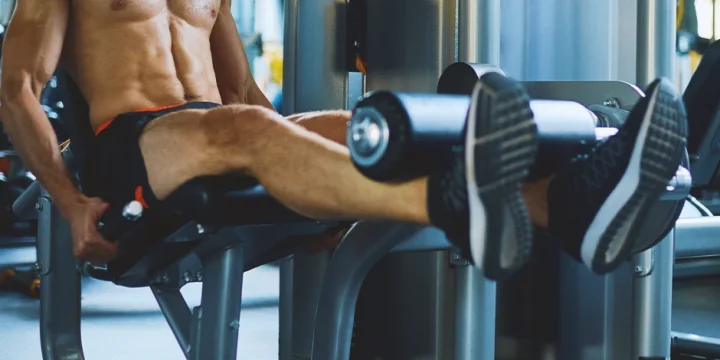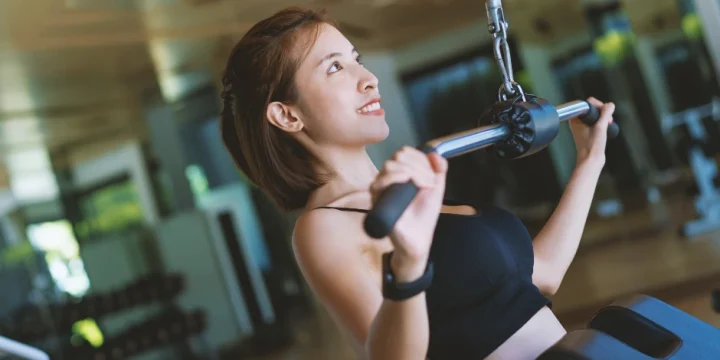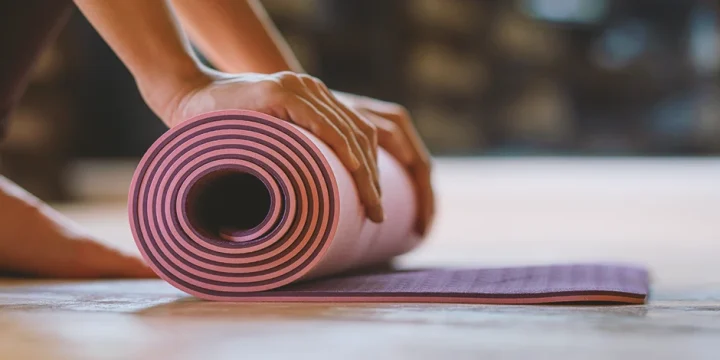Machine exercises can provide the stimulus necessary for muscle growth, which is why the best bodybuilders perform full-body workouts using resistance machines.
As a personal trainer with a decade of experience, I spent weeks of research to ultimately create full-body workouts entirely based on machines, helping you build muscle efficiently while avoiding the risk of injury.
Quick Summary
- A gym machine workout routine involves structured exercises using various machines to target different muscle groups for overall fitness and muscle development.
- The routine includes a weekly plan, focusing on specific muscle groups each day, such as chest, biceps, legs, and abs.
- Research from the Journal of Exercise Rehabilitation highlights the importance of warming up to increase blood flow, which enhances performance and lowers injury risks.
- Personally, I believe that the structured approach and variety in a gym machine workout routine make it an excellent choice for both beginners and advanced fitness enthusiasts.
Full-Body Machine Workout Program

This gym machine workout balances your training and rest days, giving your body time to recover while building muscle.
In my personal routine, balancing gym machine workouts with rest days has been key to muscle building and recovery.
Depending on your progress, follow this full-body workout plan for three to twelve weeks to avoid hitting a plateau.
In addition to sculpting your body, gym machine workouts offer significant psychological benefits, such as enhancing mood, reducing stress levels, and even improving cognitive functions, making them a holistic approach to health and wellness.
Monday: Chest & Biceps
- Chest press (3x15) - Works the upper body pushing muscles (the chest, shoulders, and triceps).
- Cable crossover (3x15) - Targets your pecs, shoulders, and back.
- Pec deck (3x15) - Strengthens your torso and the backs of your shoulders.
- Cable concentration curls (3x15) - Help you train the biceps brachii muscle.
- Preacher curl - This exercise focuses on working the biceps as it stabilizes the arm.
- Cable curl - Cable curls target the biceps, forearms, and deltoids.
Tuesday: Leg & Abs
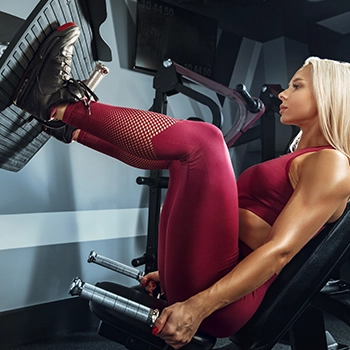
- Machine crunch (3x15) - Allows you to work your abs and obliques.
- Rower knee tucks (3x15) - This movement allows you to target your abs, improving your core strength and posture.
- Reverse hyperextension machine (3x15) - Helps you work your hamstring and glutes.
- Leg press (3x15) - This movement allows you to train your quads, glutes, hamstrings, and calves.
- Smith machine rear lunge (3x15) - Targets the calves, quads, glutes, and hamstrings.
- Standing calf raise (3x15) - Activates the gastrocnemius muscle, the chief muscle of the calves.
“Control the tempo of the exercise to see the full benefits of standing calf raises. Performing the movement too quickly isn’t as effective–at least in the beginning. It’s best to raise and lower your heels slowly to see increased strength and aesthetic improvement.”
- Chelsea Evers, Certified Personal Trainer
Thursday: Back & Triceps
- Wide grip lat pull-down (3x15) - Targets your lats, rear deltoids, traps, and triceps.
- Back extension (3x15) - Primarily works your lower back, which helps improve your posture, according to the WebMD [1].
- Cable upright row (3x15) - This compound exercise targets your lats, rhomboids, triceps, biceps, and deltoids.
- Triceps pushdown machine (3x15) - This single-joint exercise focuses on the triceps.
- Tricep pull (3x15) - Primarily targets your triceps but can also activate other muscle groups as stabilizers, such as the traps and lats.
Saturday: Shoulder & Arms
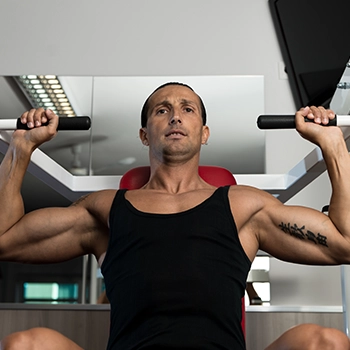
- Shoulder press (3x15) - This is a shoulder press variation intended to activate the deltoid muscles. Utilizing free weights necessitates a lot of core stabilization - eliminating the need for this allows you to focus on lifting weights and activating the delts.
- Cable lateral raise (3x15) - This shoulder isolation exercise targets the deltoid muscles.
- Hammer curl (3x15) - Targets the biceps brachii and helps improve grip strength due to working the brachioradialis muscle.
- Face pull (3x15) - Mainly works the rear deltoids and activates the traps and upper back muscles [2].
“The most common culprit when doing face pulls incorrectly is simply not understanding what you're supposed to be working. This is a rear delt exercise, so you should feel it working the back side of your shoulders into your upper back between your shoulder blades.”
- Laura Williams, Fitness Writer
How to Warm Up Using Machines?

To warm up using machines, hop on the treadmill, stationary bike, or quality compact rowing machines for five to fifteen minutes, then perform three sets of machine exercises without weights.
For example, if it's leg day, try doing some leg presses without any added weight. This will help you activate your muscles and prepare them for heavier lifting.
I always start my clients with a 5-15 minute warm-up on the treadmill or stationary bike, followed by three sets of light machine exercises.
According to the Journal of Exercise Rehabilitation, increasing blood flow and warming up before workouts improves your performance and lowers injury risks [3].
Another cardio machine equipment you could use is the elliptical cross trainer.
Research published in Gait & Posture has shown that it is the best cardio machine for activating the quads and coactivating the quads/hamstrings [4].
“Stand upright on the machine and do not lean forward or backward. You should be able to balance without leaning the handles for support. Avoid gripping the handles too tightly. Look straight ahead.”
- Elizabeth Quinn, Exercise Physiologist
Why Should You Use Machine Exercises in Your Workout?

Based on my training experience, I recommend machine exercises for their ease of use, safety, versatility, and muscle isolation capabilities.
1. Ease of use
If you feel intimidated by the free weights section of the gym, you should opt for machine exercises that follow a fixed movement pattern, which makes them easier to use and decreases the risk of injury.
Most machines have illustrations to help you correctly perform the exercise.
2. Safe and Beginner-Friendly
Resistance machines come with adjustable settings that can be adapted to your fitness level, which is particularly important for individuals with physical limitations.
Plus, machines provide better stability and support for your body; for example, using a leg press machine is safer than doing barbell squats.
Training with machines allows you to train to failure in relative safety, given that you’re less likely to be crushed under a heavy free weight.
3. Allow You to Work Different Angles
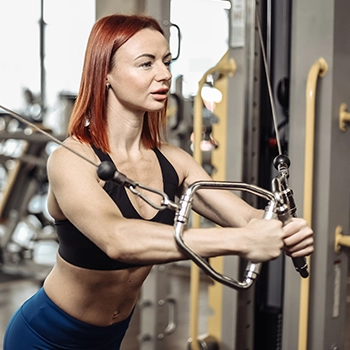
If your workout routine only includes bodyweight exercises or free-weight exercises, you’re missing out on other angles that can allow you to increase your muscle gains.
With weight machines, you can work your muscles from angles that would be nearly impossible to reproduce with other weight training methods.
For example, the wide grip lat pull-down provides a vertical pulling movement that cannot be performed using free weights.
Related: Free Weights vs Machines
4. Better at Isolation Muscles
Exercise machines allow you to isolate and train a single muscle, which will help you fix any muscular imbalances.
5. Physical Therapy
When it comes to rehabilitating injuries, resistance machines are best as they allow for a more controlled motion and specifically target certain muscle groups.
To maximize the effectiveness of your gym machine workouts, I recommend integrating wearable technology like fitness trackers or smartwatches. These devices can provide real-time feedback on your performance, track your progress, and even suggest adjustments for optimal results.
The added benefit of weight machines is the ability to track progress and give feedback.
This means that therapists and patients can see how much progress is being made and make adjustments accordingly.
Mike Julom, certified personal trainer and founder of fitness website This Is Why Im Fit, recommends making workouts a mix of machine exercises, free weights, bodyweight exercises, and cardio, because they each have unique benefits.
The most ideal routine would be to mix it up and keep it fun and varied. That's the recipe for a well-rounded fitness journey.
FAQs
What Gym Machines Work Your Whole Body?
The gym machines that work your whole body are rowing machines, elliptical machines, cable machines, treadmills, and stair climbers.
How Many Machine Exercises Should I Incorporate For a Full-Body Workout?
You should incorporate five to seven machine exercises per workout. However, your number of exercises depends on your fitness level, personal goals, and the machines you use.
What Are The Main Drawbacks of Machine Workouts?
The main drawbacks of machine workouts are lack of functional training, limited range of motion, and elimination of the activation of stabilizer muscles.
References:
- https://www.webmd.com/fitness-exercise/how-to-do-back-extensions
- https://www.verywellfit.com/face-pulls-exercise-for-stronger-shoulders-4161298
- https://www.ncbi.nlm.nih.gov/pmc/articles/PMC5833972/
- https://www.ncbi.nlm.nih.gov/pmc/articles/PMC3299003/
About The Author
You May Also Like
